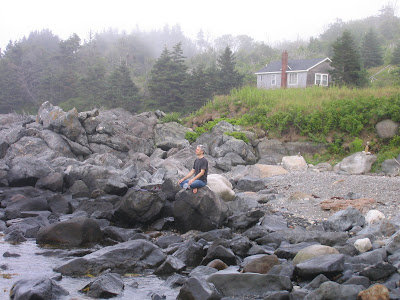Research
New article by Clare Cooper Marcus on Healing Gardens
October 27, 2008
More Useful Research on Landscapes for Health
October 23, 2008

The articles from InformeDesign have been coming fast and furious (they send weekly research summaries), so instead of listing each one separately, I’m listing three at a time today (as always, click on the colored words to connect to the links):
New Study: Childhood Memories and Environmental Stewardship
October 20, 2008
- Previous studies have shown that positive childhood experiences caring for nature influence environmental stewardship in adulthood. The reasons these experiences lead to environmentalism has not been thoroughly investigated.
- Free play in natural environments with a variety of features (e.g., puddles, mud) provides limitless first-hand learning experiences (Reed, 1996) that encourage continued interaction with nature, teach children about how nature works, and demonstrate the human capacity to impact nature.
Evidence-Based Design: Definition and Discussion
October 1, 2008
New Article from InformeDesign’s Newsletter
September 25, 2008
A new article from InformeDesign‘s latest issue of Implications, by Jeff Rosenfeld, Ph.D., “Senior Housing Globalized,” discusses changes, trends, and recent developments in senior housing in China, Japan, India, and elsewhere in the Pacific Rim.
Wrote a Thesis? Part II
August 29, 2008
Back in March, I put a call out to graduates requesting theses that I could list on the TLD References page. I’ve gotten a few responses, and have found a couple of my own in my travels as well. These, as well as some of the abstracts, can be found in alphabetical order on the TLD References page, along with previously-listed theses. Additions to this list are always welcome!
What’s the Difference? Real Nature vs. Views of Nature vs. Pictures of Nature
August 9, 2008
Hot Off the Press: Journal of Therapeutic Horticulture 07-08
August 7, 2008
I Demand Satisfaction! The Role of Nature in Job Satisfaction
June 24, 2008
Not the dueling kind, but the kind that involves psychological well-being.
The next time you need a reason for investing in a garden, or windows that look out onto an interesting view, or even some indoor plants, you can cite this new study which has linked job satisfaction to views of live plants or windows:
“Individuals working in spaces with live interior plants or window views have significantly higher levels of job satisfaction than people who work in spaces without live plants or windows: “Findings indicated that individuals who worked in offices with plants and windows reported that they felt better about their job and the work they performed. This study also provided evidence that those employees who worked in offices that had plants or windows reported higher overall quality-of-life scores.” Live plants in an office, even without the window views, lead to more positive psychological states.”
Andrea Dravigne, Tina Waliczek, R. Lineberger, and J. Zajicek. 2008. “The Effect of Live Plants and Window Views of Green Spaces on Employee Perceptions of Job Satisfaction.” HortScience, vol. 43, p. 279.
I found this study listed on Research Design Connections, an excellent resource for anyone in the design and healthcare fields.
This is the view out my office door, so I have no excuses for not loving my work!






